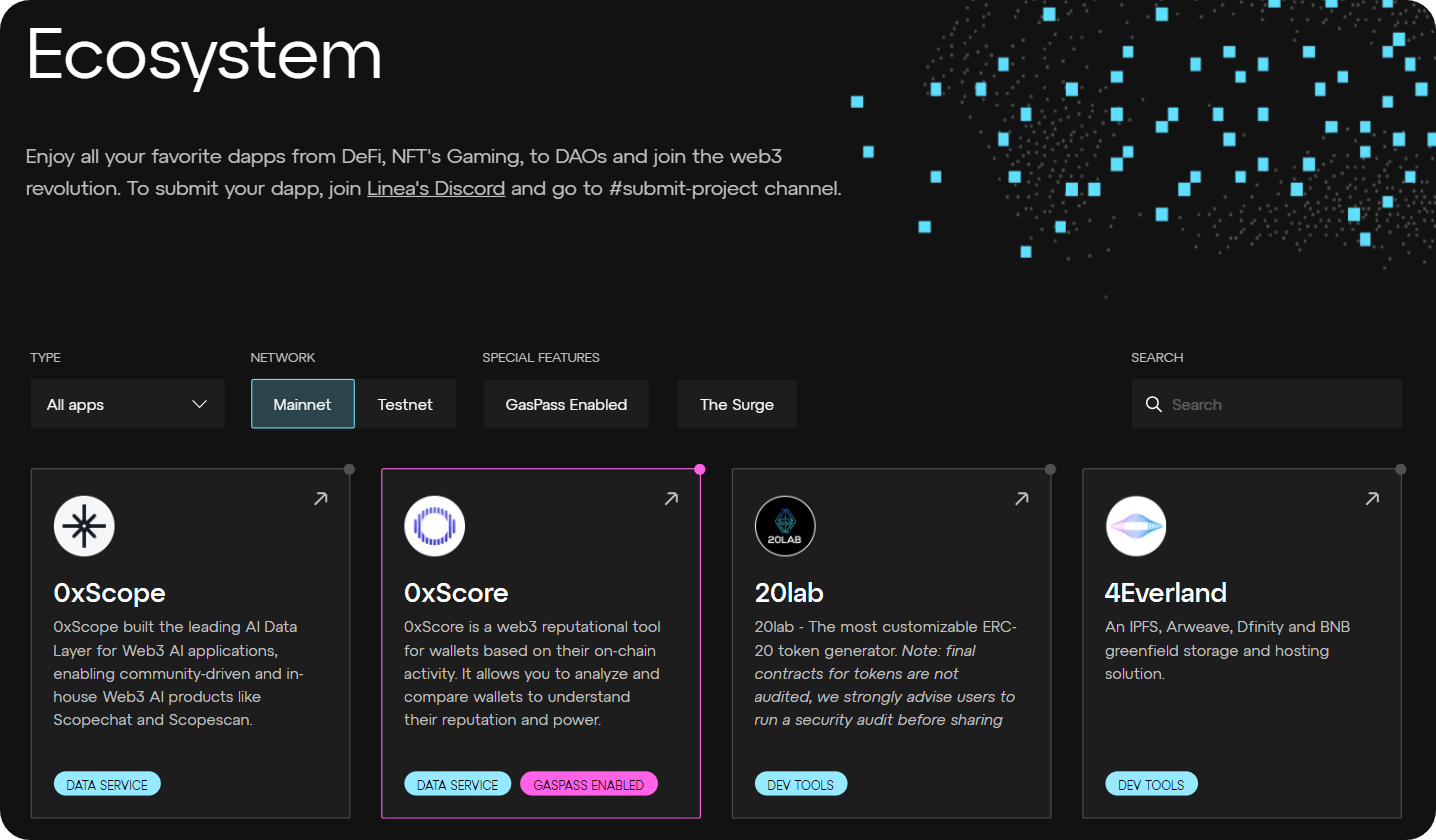Linea is a Layer 2 (L2) scaling solution built on the Ethereum blockchain, designed to facilitate fast and cheap transactions.
Built by Consensys, the creators of the popular MetaMask wallet, Linea offers an extremely developer-friendly experience thanks to its equivalence with the Ethereum Virtual Machine (EVM) and its native integrations with Consensys products.
Key takeaways
- Linea is a "zero-knowledge" (ZK) rollup that's fully equivalent to the EVM, i.e. a zkEVM, which enables seamless integration with existing Ethereum tools and infrastructure.
- By using ZK proofs, Linea offers drastically lower gas fees and higher transaction throughput than Ethereum, making it an ideal platform for scalable apps.
- Today, Linea is the 7th-largest L2 in the Ethereum ecosystem with $1.25 billion in total value locked (TVL).
What is Linea?

Linea is a zkEVM L2. It leverages ZK proofs to validate transactions, ensuring they are accurate and secure without the need to process each transaction individually on the Ethereum mainnet. This approach significantly reduces gas fees and increases transaction speed, making it a powerful tool for scaling Ethereum apps.
How does Linea work?
Linea's architecture is built around three main components: a Sequencer, a Prover, and a Bridge Relayer.
- Sequencer: The Sequencer is responsible for ordering, building, and executing transactions. It collects transactions from the Linea mempool, validates them, and includes them in blocks. These blocks are then executed to update the state of the Linea network.
- Prover: The Prover generates ZK proofs that verify the correctness of the transactions executed by the Sequencer. These proofs ensure that the transactions have been processed correctly without requiring the Ethereum mainnet to re-execute them.
- Bridge Relayer: The Bridge Relayer handles the communication between Linea and Ethereum. It ensures that the transaction data and ZK proofs generated by the Prover are securely submitted to Ethereum for finality.
Linea also employs a method called "conflation," which combines multiple blocks' transaction data into a single batch. This batch is then processed to create a zk-proof, which is submitted to Ethereum. This process minimizes the costs of submitting proofs to Ethereum and maximizes the efficiency of the L2.
Why Linea?
Linea's full EVM equivalence allows developers to use the same tools and infrastructure they are familiar with on Ethereum. This dynamic makes it easier to port existing apps to Linea or build new ones using popular resources.
Additionally, Linea boasts native integrations with dozens of offerings, including popular Consensys products like MetaMask and Infura, streamlining both its user experience and development processes.
How to invest in Linea?
Linea uses ETH as its native gas token, and the L2's documentation says the project currently "doesn't have any plans to launch a token."
However, Linea is working to decentralize its technology stack, and historically L2s have kickstarted decentralized governance by launching tokens to their communities. The denial of token plans may be diplomacy while official details are still being worked out.
That said, it seems possible that Linea will eventually release a token, and the project's ongoing LXP points system may help define the airdrop eligibility. If an airdrop does happen, the native token will become tradable on exchanges and offer a direct way to invest in the Linea ecosystem.
Top Linea projects

The Linea app ecosystem features more than 100 projects today. Some of the top experiences to explore here include:
- 🪪 0xScore — a web3 reputational tool for wallets
- 🐮 Beefy — a yield optimizer platform
- 💎 Etherfi — creators of the eETH liquid restaking token
- 🃏 Jokerace — an onchain contests platform
- 🌉 LI.FI — a crosschain bridge aggregator protocol
